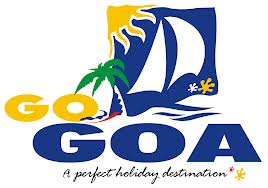 -Special 2 hour cruise will include Diwali celebrations, entertainment programme and lavish buffet
-Special 2 hour cruise will include Diwali celebrations, entertainment programme and lavish buffet
-Midnight bus tour for guests in and around Panjim to watch burning of Narkarsur effigies
-The cruise will begin from Panjim jetty at 10pm and go on till midnight
October 29, 2013: Goa Tourism is all set to celebrate Diwali with a bang this year. To give tourists and Goans a feel of the festivities, Goa Tourism will be organizing a special 2-hour Diwali celebrations at Santa Monica cruise boat on November 1, 2013. The cruise will begin at 10pm and go on till midnight. One of the highlights of this is that those who are aboard will get to witness the burning of Narkasur effigies, an important ritual in the state during this festival.
During the cruise, guests will be treated to entertainment programmes like Goff dance (Goan folk dance), Divli dance performance, Special UV Diwali act and other interesting games. A buffet with special Diwali delicacies will also be served. The passes for this cruise are priced at Rs. 1,500 (for a couple), Rs. 900 (single) and Rs. 400 (for a child between 5 to 12 years of age).
Following this the guests will then be taken for a midnight bus tour around Panjim to watch the burning of Narkasur effigies. In Goa, effigies of Narkasur are burnt a day before diwali. Today, several Narkasur competitions are held all over the state accompanied by music. On this night, the entire state stays up to watch the burning of the Narkasur effigies.
Mr. Nilesh Cabral, Chairman of Goa Tourism Development Corporation (GTDC) said, “Diwali is a beautiful festival celebrated with pomp in Goa. For the first time, GTDC is organizing a special 2- hour cruise trip. We want everyone to be a part of these celebrations and enjoy Diwali in a different way.”
Celebrating Diwali – The Goan way
Diwali is also known as ‘diyanchi aali’ meaning row of lamps. Each house is lit with earthenware vessels containing oil and wick, also called the ‘diulis’ in Konkani. Akashdeeps – colorful lanterns are hung at the windows of every house, which adds to the festive fervour.
Most of the Goan households celebrate Diwali in a traditional manner. The rituals begin with Choti Diwali – Narakchaturdashi and go on to Vhaddli (big) Diwali – Tulsi Lagna. Most Hindu marriages begin after the auspicious Tulsi Lagna.
Choti Diwali – A typical Goan Diwali ritual starts with abhyangasnaan – bathing in oil and uttane (fragrant water) in the early wee hours of morning. This is then followed by an aarti performed by the lady of the house. Pohe (flattened rice) is an integral part of Diwali celebrations. Pohe dishes are prepared in different styles – sweet, spicy, milky, etc.
Vhaddli Diwali – The Tulsi Lagna is celebrated on the 12th day of Diwali and termed as Vhaddli Diwali/harvest festival. The farmers treat this as an auspicious day as they bring home the rice from the fields and thank Goa for the great harvest.
Goan delicacies during Diwali
The main item for diwali is the ‘Flat rice or fov’ (pohe). Fov or pohe in prepared in different ways. The varieties include Dudantle fov, Rosantle fov, Caloilele and Batat fov. Dudantle and Rosantle fov is made with milk and sugar or coconut milk and jaggery. Batat fov is cooked with potatoes, turmeric powder, green chillies, etc. making it a bit spicy.



